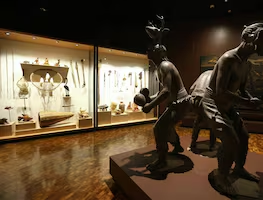Roberto, Enrique, Milka, José Antonio, and Ricardo begin their workday at 6 o'clock, from Monday through Friday. First, they get dressed up with their fluorescent green suits, then, they put on their boots, gloves, face masks, face shields, and a white coverall to then put on the equipment with which they disinfect Mexico City streets.
“They might not be doctors, but they are also heroes ; they leave their home every day and head to dangerous areas with the risk of contracting [coronavirus] but no one recognizes the value of what they do. We’re happy with people letting us do our thing,” says José Franco Hernández, who supervises the team that is working at the 20 de Noviembre neighborhood of the Venustiano Carranza borough, one of the 36 Mexico City boroughs with more COVID-19 contagions.
The group disinfects a different neighborhood every day. Between the 30 kg of the container that works like a motorized sprinkler, plus the 20 kg of the disinfectant substance, each worker has to carry almost 50 kg for eight hours with short breaks.
While Roberto sprays disinfectant, made with hypochlorite and water, over the Electricistas street, Doña Catalina, who lives in the area, tells him: “Thank you very much!” and says that their work makes her feel safer when she goes out on the street.
Recommended:
The young man mentions that it is not usual for citizens to have a positive reaction to their work, on the contrary, they attack and threaten them, they have even stolen their equipment, but other neighbors have helped them get it back.
“I only want to ask people that if they see us on the Street, don’t think that we’re spraying venom, let us work because we are also parents, brothers, and sons; our families are also waiting for us at home and this is for everyone’s sake,” he said.

Cleaning spaces
They are part of one of the 30 sanitizing brigades of Mexico City’s General Direction of Urban Services and Sustainability, who have been spending their time for four months to clean public spaces and thus reduce the risk of COVID-19 infections.
For this new task, 250 cleaning workers were trained, from basic knowledge of the virus to the proper use of the protection equipment, as well as other topics, according to Efraín Morales López, the head of the General Direction.
The workers wear protective clothing while they perform their duties.

The disinfection is done at places with a high concentration of people such as ATMs or subway station entrances, that are selected based on a daily report issued by the Mexico City Command, Control, Communications, and Citizen Contact Center (C5). Nevertheless, the disinfection of the 36 neighbors considered to be as COVID-19 hotspots has been a priority.
Morales López says, in an interview with EL UNIVERSAL, that nearly 66,000 places have been disinfected by the brigades throughout all the boroughs. They use approximately 30,000 liters of disinfectant liquid per day to sanitize public spaces spending, so far, MXN $700,000.
Recommended:
“I’m not afraid”
T the 20 de Noviembre neighborhood, a meters away from her co-workers who are disinfecting, Milka, who is another member of the brigade , says that she began working in the General Direction some eight months ago, sweeping the streets of the Condesa neighborhood. Now, she helps her co-workers to fill up the pumps with hypochlorite, the substance with which they spray urban infrastructure, every 30 minutes.

“I’m not afraid because I am a strong woman,” she asserts while she gets ready with the rest of her co-workers to continue with their journey after a 10-minutes break; they put on the sprinkler in their backs and follow their way through the Litografía street.
mp










